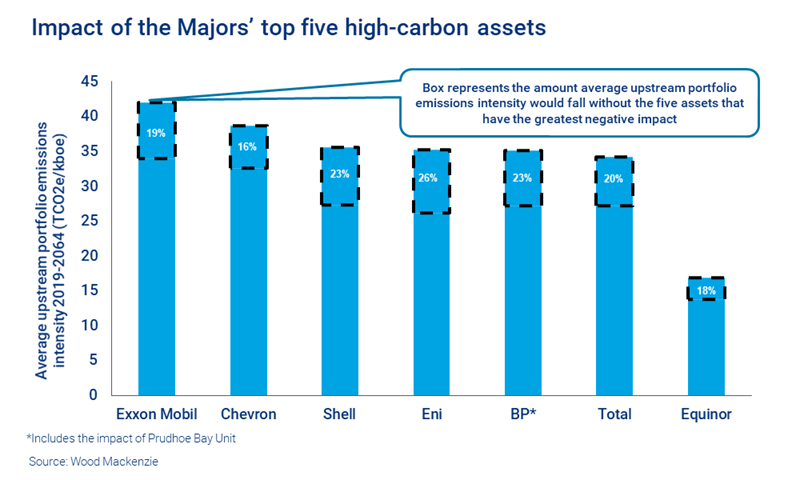Could the Majors take a fast-track route to lower emissions intensity?
A handful of assets account for almost a third of the Majors’ upstream carbon emissions. That presents an opportunity for rapid change.
1 minute read
Akif Chaudhry
Research Director, Corporate Strategy and Analytics

Akif Chaudhry
Research Director, Corporate Strategy and Analytics
Akif focuses on strategy, benchmarking and valuation analysis related to power and renewables within company portfolios.
Latest articles by Akif
-
The Edge
Renewable developers change tack
-
Opinion
Elevated subsidies enable offshore wind to end 2023 on a high note
-
Featured
Mixed signals for power and renewables in 2023
-
Opinion
Big Oil set to cash in on the trillion-dollar offshore wind prize
-
Featured
Power and renewables companies face merging headwinds in 2022 | 2022 Outlook
-
Opinion
Natural gas: friend or foe in Europe’s 2030 emissions target?
Majors’ upstream emissions: can selling a few assets make a world of difference?
Big Oil is under pressure to reduce emissions. Investor scrutiny of environmental, social and corporate governance (ESG) factors has intensified and demands a robust response. To remain investible, much bigger strides forward are needed.
There is an opportunity to make rapid progress through a selective asset sales programme. According to our research, a spotlight should be falling on a handful of assets.
Get the highlights below. Fill in the form on this page to access this complimentary insight in full.
A small number of assets make a big difference to overall emissions
The top five high-carbon assets have a significant impact, according to our recent carbon benchmarking study. Excluding the top five contributors to upstream carbon intensity within each company’s portfolio would cut their emissions intensity by an average of 20%.
Four of the Majors would see their average upstream emissions intensity fall at least 10% if the single largest contributor alone was removed from the portfolio.
The impact on absolute emissions is even more stark.
It’s clear that Big Oil has a big opportunity to make rapid progress against emissions targets by focusing on their top five high-carbon assets. But we are yet to see any big disposals that we believe were solely led by carbon reduction targets.
Should the Majors divest or organically reduce emissions?
The scale of the opportunity is significant but varies from asset to asset. We consider 17 of the 35 assets are not absolutely core, and the financial and operational impact of disposal would be relatively small. Fill in the form on this page to read more about the impact of divestment.
Other high-intensity assets are core, due to their strategic and commercial importance. For instance, disposing of LNG projects won’t be an option for most. Operational improvements are the more likely focus here – with a fresh scrutiny on how LNG could boost its green credentials.
Upstream asset prices will come under increased pressure
Carbon intensity isn’t putting downward pressure on upstream asset pricing – yet. Upstream asset prices are still trading in the US$55-65/bbl range, even for carbon-intensive assets. But that will change. There is now a real opportunity to take a long, hard look at portfolios before the window starts to close.
A selective asset sales programme would offer a fast-track route to lower emissions intensity, with limited impact on upstream value and output. This would also free up capital for redeployment, either to themes that fit the energy transition story or to boost shareholder returns. All of which would help to answer the burning question – how can Big Oil stay investible?
Of course, while divesting assets may improve the emissions intensity of the Majors’ portfolios, new ownership doesn’t necessarily help to meet global climate goals. Niche operators would be under pressure to find innovative ways to drive down emissions.
Fill in the form at the top of this page to read this complimentary insight in full. This includes:
- The top five assets’ contribution to total upstream portfolio emissions
- The contribution of the top five assets to value and production
- Challenges for asset sellers








